|
Books Should Be Free Loyal Books Free Public Domain Audiobooks & eBook Downloads |
|
|
Books Should Be Free Loyal Books Free Public Domain Audiobooks & eBook Downloads |
|
Fantasy Books |
|---|
|
Book type:
Sort by:
View by:
|
By: Lily Dougall (1858-1923) | |
|---|---|
 Mermaid
Mermaid
"'What a fool I was not to go where she beckoned!' mused Caius. 'Where? Anywhere into the heart of the ocean, out of this dull, sordid life into the land of dreams.' For it must all have been a dream—a sweet, fantastic dream, imposed upon his senses by some influence, outward or inward; but it seemed to him that at the hour when he seemed to see the maid it might have been given him to enter the world of dreams, and go on in some existence which was a truer reality than the one in which he now was... | |
By: Lord Dunsany (1878-1957) | |
|---|---|
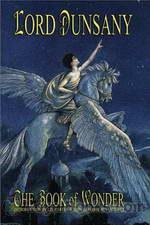 The Book of Wonder
The Book of Wonder
“Come with me, ladies and gentlemen who are in any wise weary of London: come with me: and those that tire at all of the world we know: for we have new worlds here.” – Lord Dunsany, the preface to “The Book of Wonder” | |
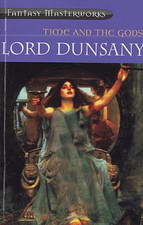 Time and the Gods
Time and the Gods
Lord Dunsany (24 July 1878 – 25 October 1957) was a London-born Anglo-Irish writer and dramatist notable for his work in fantasy. He was influenced by Algernon Swinburne, who wrote the line “Time and the Gods are at strife” in his 1866 poem “Hymn to Proserpine”, as well as by the fairy tales of the Brothers Grimm and Hans Christian Andersen. In turn, Dunsany’s influence was felt by H. P. Lovecraft and Ursula K. Le Guin. Arthur C. Clarke corresponded with Dunsany between 1944 and 1956. Those letters are collected in the book Arthur C. Clarke & Lord Dunsany: A Correspondence. Time and the Gods, a series of short stories written in a myth-like style, was first published in 1906. | |
 Fifty-One Tales
Fifty-One Tales
Very brief, well-crafted stories, many having surprise endings, all steeped in the dye of myth and calling to every reader's neglected imagination. | |
By: Lord Dunsany (1878-1957) | |
|---|---|
 Gods of Pegāna
Gods of Pegāna
"The Gods of Pegāna" is the first book by Anglo-Irish fantasy writer Lord Dunsany, published on a commission basis in 1905... The book is a series of short stories linked by Dunsany's invented pantheon of deities who dwell in Pegāna. It was followed by a further collection "Time and the Gods" and by some stories in "The Sword of Welleran and Other Stories". | |
 Dreamer's Tales
Dreamer's Tales
"A Dreamer's Tales" is the fifth book by Irish fantasy writer Lord Dunsany, considered a major influence on the work of H. P. Lovecraft, J. R. R. Tolkien, Ursula K. Le Guin, Michael Moorcock and others. "A Dreamer's Tales" is a collection of sixteen fantasy short stories, and varies from the wistfulness of "Blagdaross" to the horrors of "Poor Old Bill" and "Where the Tides Ebb and Flow" to the social satire of "The Day of the Poll." (text from Wikipedia articles on Lord Dunsany and "A Dreamer's Tales") | |
 Don Rodriguez: Chronicles of Shadow Valley
Don Rodriguez: Chronicles of Shadow Valley
| |
 Tales of War
Tales of War
Lord Dunsany brings his lucid and magical prose to the subject of the harsh realities of war by providing a series of vignettes that are at times grim and grounded but also at times eerie and fantastical. Summary by Ben Tucker. | |
By: Lucian of Samosata (120—180) | |
|---|---|
 Trips to the Moon
Trips to the Moon
The endeavour of small Greek historians to add interest to their work by magnifying the exploits of their countrymen, and piling wonder upon wonder, Lucian first condemned in his Instructions for Writing History, and then caricatured in his True History, wherein is contained the account of a trip to the moon, a piece which must have been enjoyed by Rabelais, which suggested to Cyrano de Bergerac his Voyages to the Moon and to the Sun, and insensibly contributed, perhaps, directly or through Bergerac, to the conception of Gulliver’s Travels. The Icaro-Menippus Dialogue describes another trip to the moon, though its satire is more especially directed against the philosophers. | |
By: Lucius Apuleius | |
|---|---|
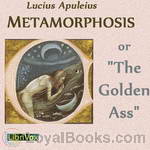 Metamorphosis or The Golden Ass
Metamorphosis or The Golden Ass
The Metamorphosis, also known as The Golden Ass, is one of the very few novels of the Ancient World that survived to our days; one of the two novels of Roman Literature that we can still read; and the only one preserved in its entirety (the other one being the extremely fragmentary Satyricon). The story of the Metamorphosis, the tale of a man turned into a donkey that goes through many adventures to become a man again, inspired many other similar ones later on. However, more than just the plot, the style of the Golden Ass also made it famous... | |
By: Ludovico Ariosto (1474-1533) | |
|---|---|
 Orlando Furioso
Orlando Furioso
Charlemagne's nephew Orlando (AKA Roland) is driven insane by the infidelity of his beloved Angelica. Angelica's relationship with him and others loosely unifies multiple story lines to produce a rich tapestry of romance, fictionalized history, and pure fantasy. This romance-epic is a sequel to the less distinguished and unfinished romance Orlando Innamorato, by Mattteo Maria Boiardo. | |
By: Margaret Gatty (1809-1873) | |
|---|---|
 Parables from Nature
Parables from Nature
Parables From Nature is a collection of short stories which were originally published as 4 separate volumes. They are inspired from Nature and written for children. Nevertheless, Gatty uses children's literature because she knows that in doing so, she can reach a wider group of readers and point out problems from the Victorian Age. | |
By: Marie Corelli (1855-1924) | |
|---|---|
 A Romance of Two Worlds
A Romance of Two Worlds
A Romance of Two Worlds starts with a young heroine telling her story of a debilitating illness that includes depression and thoughts of suicide. Her doctor is unable to help her and sends her off on a holiday where she meets a mystical character by the name of Raffello Cellini, a famous Italian artist. Cellini offers her a strange potion which immediately puts her into a tranquil slumber, in which she experiences divine visions. | |
 Young Diana
Young Diana
Poor Diana May. Her fiancé has jilted her, her parents think she is an encumbrance and no one recognises her intelligence. She seems destined to remain unloved, unappreciated and unpaid - until she decides to take control of her life. It all begins with an advertisement for an assistant to an eccentric scientist with a hidden laboratory in Switzerland... - Summary by Newgatenovelist | |
By: Marion Zimmer Bradley (1930-1999) | |
|---|---|
 Falcons of Narabedla
Falcons of Narabedla
Somewhere on the Time Ellipse, Mike Kenscott became Adric of the Scarlet Tower, and the only way to return to his own identity was to find the Keep of the Dreamer, and loose the terrible Falcons of Narabedla. A classic novella by master science fiction writer Marion Zimmer Bradley, originally published in Other Worlds magazine in 1957. - Summary by Mark Nelson | |
By: Mary Knight Potter (?-1915) | |
|---|---|
 Peggy's Trial
Peggy's Trial
Ten-year old Peggy Clayton and her two younger brothers, Teddy and Harry, live with their father, Dr. Clayton, and Nurse, a woman who has taken care of them since the death of their mother when Peggy was five. Peggy is a sweet and kind little girl with a big imagination and a great sense of fun. Peggy's Trial follows her adventures with her friends at school, the mischief she and her brothers cause poor old Nurse, and even Peggy’s being chased by a bull. But nothing can prepare Peggy, Teddy and Harry when they fear they may lose their beloved father to a stepmother. | |
By: Mary Louisa Molesworth (1839-1921) | |
|---|---|
 The Palace in the Garden
The Palace in the Garden
The Palace in the Garden is the engaging story of three orphans sent to live in the mysterious country cottage of Rosebuds. The inquisitive children piece together the unexpected mystery of the Palace in the garden & all that goes with it. The story has a few twists. This book put me in mind of the Secret Garden.(Introduction by ilianthe) | |
By: Maude L. Radford (1875-1934) | |
|---|---|
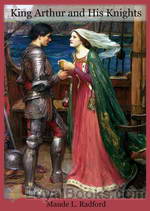 King Arthur and His Knights
King Arthur and His Knights
Published in 1903, King Arthur and His Knights by Maude L. Radford is an easy to read version of the Arthurian legends, made simple and interesting for children. Maude Lavinia Radford Warren was a Canadian born American who taught literature and composition at the University of Chicago between 1893-1907. Following the success of some of her books, she left teaching to take up writing as a full time career. She also served as a war correspondent for the New York Times magazine during WWI and contributed several remarkable features on the role of women in the conflict... | |
By: May Agnes Fleming (1840-1880) | |
|---|---|
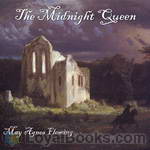 The Midnight Queen
The Midnight Queen
May Agnes Fleming is renowned as Canada's first best-selling novelist. She wrote 42 novels, many of which have only been published posthumely.The Midnight Queen is set in London, in the year of the plague 1665. Sir Norman Kingsley visits the soothsayer "La Masque" who shows him the vision of a beautiful young lady. Falling madly in love with her, he is astonished to find her only a short time later and saves her from being buried alive. He takes her home to care for her, but while he fetches a doctor, she disappears. Sir Kingsley and his friend Ormistan embark on an adventure to solve the mystery of the young lady - will they ever find her again? | |
By: Michael Knerr (?-1999) | |
|---|---|
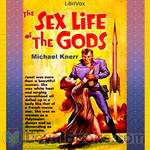 Sex Life of the Gods
Sex Life of the Gods
Beth Danson was about twenty-five and, besides her deep auburn-brown hair and lovely face, she boasted an equally attractive body. He found himself captivated by the warm thrust of her breasts beneath the silk blouse. The clear milk of her flesh, at the “V” of her throat excited him in a strange way. When he thought of her as his wife, it was frightening. It was as though someone had tossed him a woman and expected him to just fall into the routine of marriage. It wouldn’t be hard to come to love this woman, but it would take awhile... | |
By: Miss Mulock | |
|---|---|
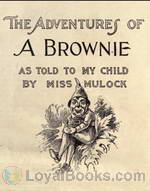 Adventures of a Brownie as Told to My Child
Adventures of a Brownie as Told to My Child
Adventures of a Brownie follows the life of a brownie who lives in a family’s coal cellar and the adventures he gets into with the members of the household. (Written by Ancilla) | |
By: Montague R. James (1862-1936) | |
|---|---|
 The Five Jars
The Five Jars
The Five Jars is the only novel written by James, who is best known for his ghost stories. It is a peculiarly surreal fantasy apparently written for children. While he is out walking, the narrator is drawn to a remote pool, and finds a small box that has been hidden since Roman times. He gradually learns how to use its contents, fighting off a series of attempts to steal it, and becomes aware of a strange world hidden from our own. | |
By: Morley Roberts (1857-1942) | |
|---|---|
 Adventure of the Broad Arrow: An Australian Romance
Adventure of the Broad Arrow: An Australian Romance
When a few men decide to go for looking for gold in the outback of Australia, days of extreme heat with no water and no rain in sight, make them turn back and give up the trip; all but two of them that is, Smith and Mandeville, aka the "Baker. Smith and Baker decide to tough it out and go after their dreams, chancing their lives to find "their luck". Little do they realize, they will put their lives in grave danger, and this quest for gold will turn into a nightmare. Life threatening food and water deprivation is a constant issue, and they had no idea they would stumble upon an unknown tribe of prehistoric white men that are head hunters and cannibals... | |
By: Murray Leinster (1896-1975) | |
|---|---|
 The Mad Planet
The Mad Planet
It is 30,000 years following dramatically changed climate conditions on earth which had let massive amounts of carbon dioxide belch from the interior of the planet into the atmosphere. Over the millenia this would have quite devastating effects on life as it had once been known. Much of the human and animal population would not survive the climate change, and indeed those few humans who did survive knew nothing of all which their predecessors had learned and built. Indeed, they knew not even of their existence... | |
 Operation: Outer Space
Operation: Outer Space
Jed Cochrane is about to take off on man's first interstellar voyage. His mission: Make sure it's good television! (Introduction by Mark Nelson) | |
By: Nathaniel Hawthorne (1804-1864) | |
|---|---|
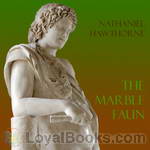 The Marble Faun
The Marble Faun
The Marble Faun is Hawthorne's most unusual romance. Writing on the eve of the American Civil War, Hawthorne set his story in a fantastical Italy. The romance mixes elements of a fable, pastoral, gothic novel, and travel guide. In the spring of 1858, Hawthorne was inspired to write his romance when he saw the Faun of Praxiteles in a Roman sculpture gallery. The theme, characteristic of Hawthorne, is guilt and the Fall of Man. The four main characters are Miriam, a beautiful painter who is compared... | |
By: Norman Lindsay (1879-1969) | |
|---|---|
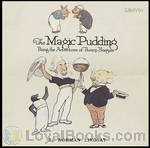 The Magic Pudding
The Magic Pudding
Bunyip Bluegum the koala sets out on his travels taking only a walking stick. At about lunchtime, feeling more than slightly peckish, he meets Bill Barnacle the sailor and Sam Sawnoff the penguin who are eating a pudding. The pudding is a magic one which, no matter how much you eat it, always reforms into a whole pudding again. He is called Albert, has thin arms and legs and is a bad-tempered, ill-mannered so-and-so into the bargain. His only pleasure is being eaten. The book is divided into four "slices" instead of chapters. (Introduction by Wikipedia) | |
By: Olivia Shakespear (1863-1938) | |
|---|---|
 Beauty's Hour
Beauty's Hour
The young, intelligent Mary discovers that through an act of will she can transform her appearance to make herself incredibly beautiful. But will her newfound identity be all that she hopes? This recording is from the novella’s original publication in The Savoy in August and September 1896. | |
By: Owen Wister (1860-1938) | |
|---|---|
 The New Swiss Family Robinson
The New Swiss Family Robinson
A parody of its famous predecessor, this short piece was written by Owen Wister for the Harvard Lampoon | |
By: Philip Jose Farmer (1918-2009) | |
|---|---|
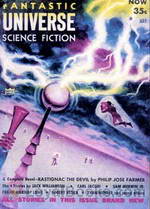 Rastignac The Devil
Rastignac The Devil
French colonists on a planet ruled by reptiles and amphibians are forced to wear living “skins” that subdue aggression and enforce vegetarianism. As children, Rastignac and his reptile friend Mapfarity force themselves to become carnivores and begin a protein fueled journey that causes Rastignac to develop a Philosophy of Violence. When a spaceship from Earth crashes in the ocean, Rastignac and company must put their philosophy to the test. - Rastignac The Devil was first published in the May 1954 issue of Fantastic Universe Magazine. | |
By: Poul William Anderson (1926-2001) | |
|---|---|
 Golden Slave
Golden Slave
100 B.C. The Cimbrian hordes galloped across the dawn of history and clashed in screaming battle against the mighty Roman legions. Led by their chief, Boierik, and his son, Eodan, the hungry and homeless pagan tribes hurled back the Romans time after time in their desperate search for land. But for all the burning towns, the new-caught women weeping, the wine drunk, the gold lifted, the Cimbri did not find a home. And now it was over. At Vercellae the Roman armies shattered them completely. Only a few survived—and for them death would have been more merciful... | |
 Witch of the Demon Seas
Witch of the Demon Seas
"Guide a black galleon to the lost, fear-hauntedCitadel of the Xanthi wizards—into the very jaws of Doom? Corun, condemned pirate of Conahur, laughed. Aye, he'd do it, and gladly.It would mean a reprieve from the headsman's axe—a few more precious moments of life and love ... though his lover be a witch!" Publisher blurb - Summary by Publisher | |
By: Randall Garrett (1927-1987) | |
|---|---|
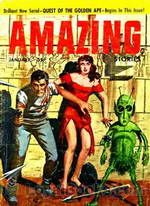 Quest of the Golden Ape
Quest of the Golden Ape
How could this man awaken with no past—no childhood—no recollection except of a vague world of terror from which his mother cried out for vengeance and the slaughter of his own people stood as a monument of infamy? Image is an illustration from the Gutenberg text. | |
By: Ray Cummings (1887-1957) | |
|---|---|
 The World Beyond
The World Beyond
Lee Anthony finds himself and two of his friends kidnapped and taken on a strange voyage. | |
By: Richard Barnum | |
|---|---|
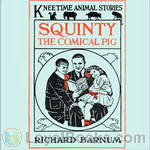 Squinty the Comical Pig
Squinty the Comical Pig
"This comical children's tale about the funny adventures of a funny pig written by an unknown author. The publisher has hired authors to write children's tales, and gave them "house names". The "name" of the author who wrote this tale is Richard Barnum. It became very successful, the most well known of Richard Barnum's tales. So, if you want to laugh a little, even if you are not a child, read this book". | |
By: Richard Jefferies (1848-1887) | |
|---|---|
 After London, or Wild England
After London, or Wild England
First published in 1885, After London, or Wild England is considered to be one of the earliest instances of post-apocalyptic fiction, describing the effects of an unspecified catastrophe that dramatically changes the face of England and its population. Divided into two parts, the first depicts the fall of civilization, as society reverts to its more primitive roots, while the second part is set years after the apocalyptic event and examines the evident changes in both natural scenery and social structure... | |
By: Robert E. Howard (1906-1936) | |
|---|---|
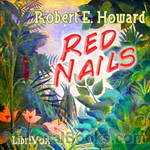 Red Nails
Red Nails
Conan the Cimmerian pursues the beautiful and deadly pirate Valeria after she kills a Stygian only to find himself cornered by a dragon. Apparently this dragon doesn’t know who he’s messing with. The pair then encounters the city of Xuchotl with its warring factions and ancient secrets. Swordplay and sorcery ensue. – Red Nails is Howard’s final Conan story and was published in the July, August, September and October 1936 issues of Weird Tales magazine | |
 Hour of the Dragon
Hour of the Dragon
The Hour of the Dragon, also known as Conan the Conqueror, is a fantasy novel by American writer Robert E. Howard featuring his sword and sorcery hero Conan the Cimmerian. It was one of the last Conan stories published before Howard's suicide although not the last to be written. The novel was first published in serial form in the pulp magazine Weird Tales in 1935 through 1936. | |
 Shadows in the Moonlight
Shadows in the Moonlight
For a genuine Conan tale, full of barbarian craftiness, magic, fierce fighting and his berserker strength, this meets every criteria and is one of the best. Conan was raiding with the Free Companions when they were trapped and slaughtered by the merciless Shah Amurath the great Lord of Akif. Conan is one of the very few who escape by hiding in the mud of the marshes like a beast living on raw snake and muskrat. Luck, which seems to have deserted him, smiles again and allows him the chance for revenge and he eagerly seizes it, destroying his enemy with fierce strokes... | |
 Gods of the North
Gods of the North
"The Frost-Giant's Daughter" is, arguably the earliest chronological story by Robert E. Howard in terms of Conan's life. The brief tale is set somewhere in frozen Nordheim, geographically situated north of Conan's homeland, Cimmeria. Conan is depicted by Howard as a youthful Cimmerian mercenary traveling among the golden-haired Aesir in a war party. Shortly before the story begins, a hand-to-hand battle has occurred on an icy plain. Eighty men ("four score") have perished in bloody combat, and Conan alone survives the battlefield where Wulfhere's Aesir "reavers" fought the Vanir "wolves" of Bragi, a Vanir chieftain... | |
 Shadows in Zamboula
Shadows in Zamboula
Despite a warning received in the Suq by an elderly desert nomad, Conan stays the night in a cheap tavern in Zamboula, run by Aram Baksh. As night falls, a black Darfarian cannibal enters to drag him away to be eaten. All of the Darfar slaves in the city are cannibals who roam the streets at night. As they only prey on travellers, the people of the city tolerate this and stay locked securely in their homes, while nomads and beggars make sure to spend the night at a comfortable distance from its walls... | |
 People of the Black Circle (version 2)
People of the Black Circle (version 2)
The People of the Black Circle" is one of the original novellas about Conan the Cimmerian, written by American author Robert E. Howard and first published in Weird Tales magazine in three parts over the September, October and November 1934 issues. Howard earned $250 for the publication of this story. It is set in the pseudo-historical Hyborian Age and concerns Conan kidnapping a regal princess of Vendhya (pre-historical India) and foiling a nefarious plot of world domination by the Black Seers of Yimsha... | |
 Shadows in Zamboula (version 2)
Shadows in Zamboula (version 2)
In the dark streets of Zamboula, huge ghouls stalk the night seeking victims for their ghastly rites and feasts. Conan is passing through this city and is almost a victim but escapes, only to rush to the aid of a beautiful, voluptuous maiden still in their horrible talons. Swords flash, thews are strained and the mighty Conan almost meets his match in the temple of the monkey god. Will he escape? Will he get the girl? Listen and marvel! Excellent story, well told as always by Howard. Summary by phil chenevert | |
 Hour of the Dragon (version 2)
Hour of the Dragon (version 2)
This is absolutely the best Conan novel ever written in my opinion. It follows Conan when at the peak of his power as king of Aquilonia, he is overthrown by dark, evil magic from Stygia and turned into a hunted refugee. A 3,000 year old magician from the most evil empire that ever existed is resurrected and with his sinister aid, Conan's enemies cause the barbarian's downfall. The plot twists and turns in wonderful fashion, following the Heart of Arihman, a strange extremely powerful magic jewel from another universe... | |
By: Robert Paltock (1697-1767) | |
|---|---|
 Life and Adventures of Peter Wilkins, Volume 2
Life and Adventures of Peter Wilkins, Volume 2
The imaginary voyage, from which a hero returns made wise through extraordinary experience, is at least as old as Odysseus. But the major inspiration for this 1750 iteration is Gulliver’s Travels , with which it shares elements of early sci-fi. Wilkins’ new friends are a lens through which to contemplate the customs of his old English ones, as the Lilliputians and Brobdingnagians were for Lemuel Gulliver. | |
By: Rudolf Erich Raspe (1737-1794) | |
|---|---|
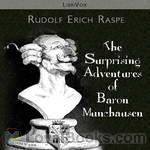 The Surprising Adventures of Baron Munchausen
The Surprising Adventures of Baron Munchausen
The stories about Münchhausen were first collected and published by an anonymous author in 1781. An English version was published in London in 1785, by Rudolf Erich Raspe, as Baron Munchhausen's Narrative of his Marvellous Travels and Campaigns in Russia, also called The Surprising Adventures of Baron Munchhausen. It is not clear how much of the story material derives from the Baron himself; however, it is known that the majority of the stories are based on folktales that have been in circulation for many centuries before Münchhausen's birth. | |
By: Rudyard Kipling (1865-1936) | |
|---|---|
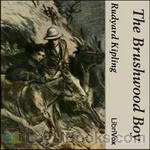 The Brushwood Boy
The Brushwood Boy
The experiences in public school, Sandhurst and military life in India of Major George Cottar together with his adventures in the dream world he discovers and frequents. | |
By: Ruth Plumly Thompson (1891-1976) | |
|---|---|
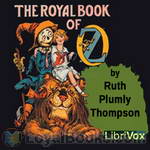 The Royal Book of Oz
The Royal Book of Oz
The Royal Book of Oz (1921) is the fifteenth in the series of Oz books, and the first to be written by Ruth Plumly Thompson after L. Frank Baum’s death. Although Baum was credited as the author, it was written entirely by Thompson. The Scarecrow is upset when Professor Wogglebug tells him that he has no family, so he goes to where Dorothy Gale found him to trace his “roots.” Then he vanishes from the face of Oz. Dorothy and the Cowardly Lion mount a search for their friend, but when that is successful, they will need to become a rescue party! | |
By: Ruth Stiles Gannett (1923-) | |
|---|---|
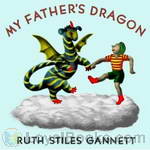 My Father's Dragon
My Father's Dragon
A story about a boy who befriends a cat and then sets off on an adventure to rescue a dragon. Illustrations from the original book can be seen at the e-text link. | |
By: Sally Watson | |
|---|---|
 Witch of the Glens
Witch of the Glens
The time is 1644 in Inverness Scotland. Kelpie, now a teenage girl, doesn't remember being kidnapped by Gypsies. They had kidnapped her at a very young age because her "Second Sight" that was indicated by her blue ringed eyes. Kelpie desperately wishes she were a witch and often wondered where she had come from. We follow Kelpie through a series of events that changes her life forever. - Summary by kirk202 | |
By: Selma Lagerlöf (1858-1940) | |
|---|---|
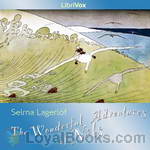 The Wonderful Adventures of Nils
The Wonderful Adventures of Nils
Selma Lagerlöf was born in Vaermland, Sweden, in 1858 and enjoyed a long and very successful career as a writer, receiving the Nobel-Price in Literature in 1909. She died in Vaermland in 1940. The Wonderful Adventures of Nils (Orig. Nils Holgerssons underbara resa genom Sverige) is a famous work of fiction by Selma Lagerlöf, published in two parts in 1906 and 1907. The background for publication was a commission from the National Teachers Association in 1902 to write a geography reader for the public schools... | |
By: Sir Arthur Conan Doyle (1859-1930) | |
|---|---|
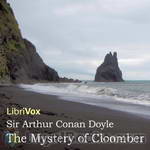 The Mystery of Cloomber
The Mystery of Cloomber
This novel is written by the author of, among other novels, the Stories of Sherlock Holmes. It is narrated by John Fothergill West, who tries to discover why the tenant of Cloomber Hall, General Heatherstone, is nervous to the point of being paranoid. Why are his fears becoming stronger every year at the fifth of October? And why doesn't he let his children leave home? This is a great mystery novel with a sharp twist at the end. | |
 Doings of Raffles Haw
Doings of Raffles Haw
The people of the small town of Tamfield are not used to exciting things happening. When millionaire Raffles Haw moves to town, rumors spread like wildfire about him. The advent of Mr. Haw, however, changes the town, and particularly the lives of the McIntyre family, in ways no one could ever have guessed. | |
By: Sir Henry Newbolt (1862-1938) | |
|---|---|
 Aladore
Aladore
Ywain, a knight bored with his administrative duties, abandons his estate to his younger brother and goes on a pilgrimage to seek his heart's desire. Following a will-o'-the-wisp resembling a child, his quest takes him to the city of Paladore, where he meets the lady Aithne, half-fae enchantress. Sir Henry Newbolt's allegorical fantasy was published in hardback in Britain in 1914 and in the Uniited States a year later. It was revived in 1975 as the fifth volume in the celebrated Newcastle Forgotten Fantasy Library. - Summary by Phil Benson, adapted from Wikipedia | |
By: Sir Thomas Malory | |
|---|---|
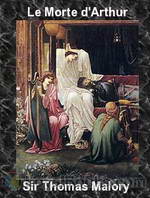 Le Morte d'Arthur
Le Morte d'Arthur
Le Morte d’Arthur (spelled Le Morte Darthur in the first printing and also in some modern editions, Middle French for la mort d’Arthur, “the death of Arthur”) is Sir Thomas Malory’s compilation of some French and English Arthurian romances. The book contains some of Malory’s own original material (the Gareth story) and retells the older stories in light of Malory’s own views and interpretations. First published in 1485 by William Caxton, Le Morte d’Arthur is perhaps the best-known work of English-language Arthurian literature today. Many modern Arthurian writers have used Malory as their source, including T. H. White for his popular The Once and Future King. | |
By: Stella Benson (1892-1933) | |
|---|---|
 Living Alone
Living Alone
This is not a real book. It does not deal with real people, nor should it be read by real people. But there are in the world so many real books already written for the benefit of real people, and there are still so many to be written, that I cannot believe that a little alien book such as this, written for the magically-inclined minority, can be considered too assertive a trespasser. -- Stella Benson (author) Published in 1919, and set in London during the First World War, Living Alone tells of the meeting of a recluse and a witch, then rambles through magic, morality and aerial dogfights on broomsticks... | |
By: Thomas Anstey Guthrie (1856-1934) | |
|---|---|
 Tourmalin’s Time Cheques
Tourmalin’s Time Cheques
Peter Tourmalin is on a sea voyage back home to England from Australia, to return to his fiancee, and he is very bored. The fact that the time difference adds on extra hours to his boredom only makes it worse. So when he gets a unique opportunity to deposit his spare time into an account with the “Anglo-Australian Joint Stock Time Bank, Limited” he doesn’t hesitate for long. By opening this account, he doesn’t have to spend his spare time right away, but can withdraw it at any future date, when he wants a break... | |
By: Thornton W. Burgess (1874-1965) | |
|---|---|
 The Adventures of Buster Bear
The Adventures of Buster Bear
Known to generations of children and their parents as the Bedtime Story Man, Thornton Waldo Burgess wrote nearly two hundred much loved children's books. They were tales that recounted the doings of delightful characters who inhabited the Green Meadow and the Green Forest. Burgess, who was also an ardent conservationist besides being a writer and journalist shared his love of Nature and respect for all beings who share this earth with us. The Adventures of Buster Bear is a fun children's book that helps children understand that animals and the forest deserve respect and it is also a sincere call for responsible conservationism... | |
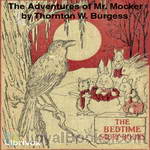 The Adventures of Mr. Mocker
The Adventures of Mr. Mocker
When an innocent blue jay starts talking in his sleep, it’s up to him to find out what’s going on in this fun, naturalistic, Southern-style children’s story. | |
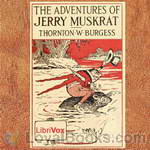 The Adventures of Jerry Muskrat
The Adventures of Jerry Muskrat
Join us as we follow Jerry Muskrat and his friends on an adventure to discover what is threatening their homeland; The Laughing Brook and The Smiling Pool. | |